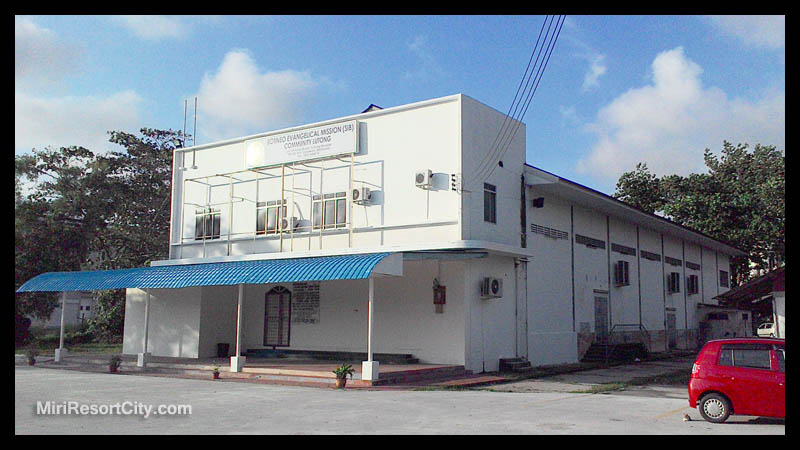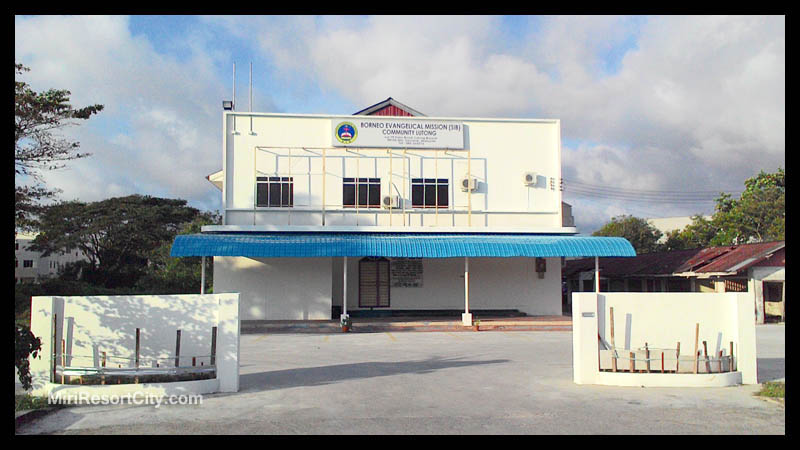Lutong Cinema
Primary tabs


The old building, in 2015.
The Lutong Cinema was constructed in 1959. Prior to the opening of this cinema, Mirians' source of entertainment in the 1920s was open air cinema on the GCM field which doubled as a baseball field, and even that was a mostly Sarawak Oilfields arrangement. A more permanent grand theatre was built at Pujut soon after near the site of Sarawak Energy today; but that one, as is with the case of most of the buildings in Miri during that period, was destroyed in World War II bombings.
Post-war, hence Mirians had to make do with open-air cinemas again - white screens and film projectors - on club fields for a period of time after that. The story goes that at any time the skies would show any signs of a raindrop during a screening, the open-air cinema would be greeted with what one perceives to be the sound of a crack of lightning - but in reality is the sound of hundreds of oil-paper umbrellas being opened simultaneously by the film goers.
The construction of the Lutong Cinema in 1959, however, ended the open-air, compulsive weather-checking and weather-related preparations of the 'matinee' & 'film' going experience. This cinema building was a more modern design, with a large hall and film projectors and seating/stages for performances. This article is from the web site miriresortcity dot com - this sentence is here to prevent blatant plagarism. The Lutong cinema drew strong business for Lutongites and oil & gas employees, while simultaneously the Cathay Cinema and the Miri Theatre in Miri town each compete for their share of the business.
As usual for these types of venues, the hawkers set up stalls in immediate vicinity of the cinema selling food, drinks and trinkets for the movie goers.
By the late 1980s, business was at the beginning of the end as the industry shifted to VCRs and video taping became more popular. Competition between the three theatres for the small population of Miri were cutthroat - movie showing schedules were advertised in the local newspapers. Unlike today, movie decisions were made by flipping through the movie schedules section in the morning paper.
With pressure to showing the latest movies or by using the latest renovations and upgrades or air conditioning, the cinema struggled during the 1980s as VCRs and video tapes became more widespread, and the beginning use of laser disc technology for home entertainment finally pushed it over the edge. The cinema was closed for the last time some time in the 1990s.
The building still exists today, it was converted as the SIB Church, where the large hall and stage made it suitable for church duty.


 The longest serving and the largest Polyclinic is the one situated close to the city centre about ten to fifteen minutes walk from the Miri District office. It is flanked by a Shell petrol station, and in the vicinity of the Handicraft Center, a shopping mall, and a primary school.
The longest serving and the largest Polyclinic is the one situated close to the city centre about ten to fifteen minutes walk from the Miri District office. It is flanked by a Shell petrol station, and in the vicinity of the Handicraft Center, a shopping mall, and a primary school. Kingwood Boutique Hotel is a distinctive hotel located alongside the famous corridor along North Yu Seng Road. Previously known as Rinwood Inn, the hotel underwent extensive renovations and redesigns to bring it up to date in 2014. Features retro-1970s design theme.
Kingwood Boutique Hotel is a distinctive hotel located alongside the famous corridor along North Yu Seng Road. Previously known as Rinwood Inn, the hotel underwent extensive renovations and redesigns to bring it up to date in 2014. Features retro-1970s design theme. Luak Bay Food Court is a food court that opened in 2015 alongside Luak Bay Road just off the Miri-Airport Road 'Seahorse' roundabout. The food court is located in between two shop houses and features muslim & other local foods and drinks.
Luak Bay Food Court is a food court that opened in 2015 alongside Luak Bay Road just off the Miri-Airport Road 'Seahorse' roundabout. The food court is located in between two shop houses and features muslim & other local foods and drinks. 